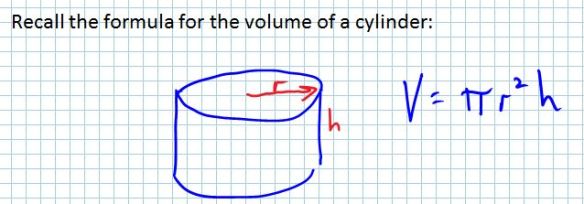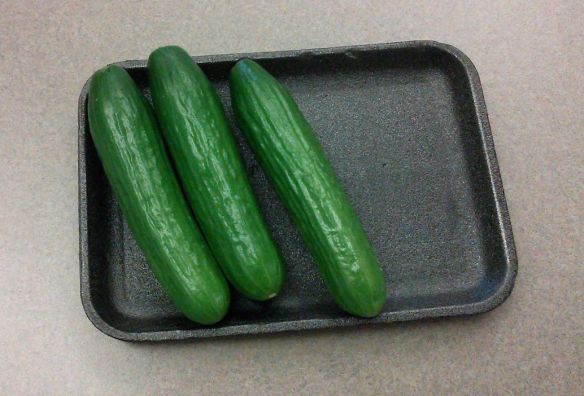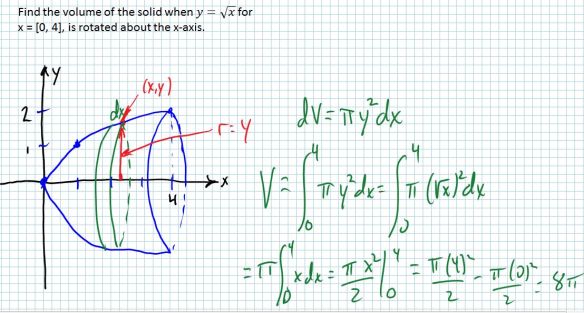If I’ve used an activity for three years in a row, I guess it’s a tradition! My calculus students have done this one for several years now, and it’s always been a hit.
To introduce the concept of volumes of rotated solids, I have my students slice cucumbers into disks and measure the volume of each slice. Then they add them up to approximate the total volume. It’s a nice way to help them visualize objects in 3D. You can read about what we do in a couple of earlier posts, here and here.
Here are the basics of the lesson:
1. Review the formula for the volume of a cylinder:
2. Pair up the students, and distribute the cucumbers.
I used small seedless cucumbers that came six to a pack, and were relatively similar in size:
Have a discussion on whether we can use the cylinder volume formula to calculate the volume of a cucumber. This should (hopefully) lead to a conversation on how we could make the cucumbers approximate cylinders if we cut off the ends. They soon realize that the radius is not constant for the entire length of the cucumber, which usually inspires someone to suggest slicing them into many small disks. (They are already familiar with approximating the area under a curve by adding many small rectangles or trapezoids.)
3. Have everyone agree on what data needs to be collected (radius and height of each slice), and what units of measurement we will use (inches or cm).
4. Distribute plates, paper towels, rulers, and knives. Have them get to work!
5. Post the results for everyone to see:

As you can see, they are fairly consistent, falling in a range from 78 to 105 cubic cm.
To verify the accuracy of an approximation, you can drop the slices of a cucumber into a beaker that is half-full of water, and see how much additional volume the slices add.
6. I always provide a bottle of ranch salad dressing, so my students can enjoy a snack after they have finished measuring and calculating.
I usually transition from this activity to determining the volume of a simple function rotated about the x-axis, such as this problem:
Since I began doing this activity, I have noticed a marked improvement in my students’ understanding of the basic process of using integration to calculate volumes of rotated solids. Having actual cucumber disks to measure and add together really drives home the concept of adding an infinite number of disks together using an integral. Before we finished working through the above example, one student was already wondering what would happen if the axis of rotation was vertical, and another was figuring out how to find the volume of a solid with a hole through it!
A possible tweak I want to try next year: cut a cucumber in half, lengthwise, and trace its outline on graph paper. Then try to derive a function that approximates the outline, and compare the volume calculated from the function with the volume found by adding disks.
Here are pictures from yesterday’s class:











Reblogged this on Stormfields.
Thanks for the idea. I did this with bananas and plastic knives, and it worked pretty well, though bananas are not the best cylinders haha.
The nice thing about cucumbers is they hold their shape well. I think the fact that bananas are not as cylindrical is a good thing – that illustrates the power of calculus to handle irregular-shaped solids.
Hi there! I’m a new calc teacher this year. Did you ever do the graph paper version? How did it go?
Welcome to the wonderful world of teaching calculus, Melissa. I did not do the graph paper version, but I would love to hear how it works for you.